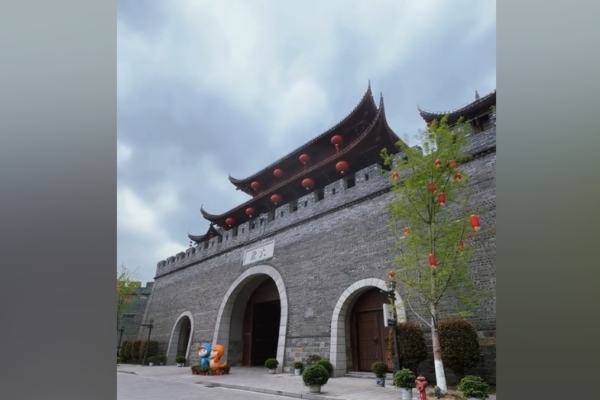In Hunan Province, the construction of Dayong Ancient City in Zhangjiajie had an investment scale of 2.43 billion yuan. However, after four years, Dayong Ancient City has incurred losses of 1.08 billion yuan and is on the brink of bankruptcy. This situation reflects the embarrassing reality of various regions in China imitating the construction of ancient cities.
According to a program on CCTV, issues related to the construction and operation of the Dayong Ancient City project were revealed.
Zhangjiajie is a famous tourist destination in China with a large number of visitors each year. The local authorities in Zhangjiajie wanted to develop more tourist projects to make money. Around 2016, there was a trend across China where many places started imitating the construction of ancient towns. In March 2016, the Dayong Ancient City project was officially approved without much investigation or argument. Construction began three months later with an investment of 2.43 billion yuan.
Dayong Ancient City opened for business in June 2021, and incurred losses of 81 million yuan that year. The losses increased to 151 million yuan in 2022, 2.49 billion yuan in 2023, and 5.96 billion yuan in 2024. The total accumulated losses over four years reached 10.8 billion yuan. Now, it has become an empty city with the only profitable project being the parking lot, and it is on the brink of bankruptcy.
Regarding the continuous losses of Dayong Ancient City, “Da Jin Comments”, a sub-branch of Shenzhen Qike Cat Information Technology Co., Ltd., analyzed on June 28th that firstly, Dayong Ancient City is located in the downtown area of Zhangjiajie surrounded by commercial and residential areas, which is not in harmony with the city. Well-performing ancient towns are usually located near famous scenic spots, so visitors can visit the ancient town after touring the scenic area.
Secondly, Dayong Ancient City lacks uniqueness and suffers from serious homogeneity. It is called an ancient city, but it lacks any distinctive features, with only two entertainment projects while the rest consists of commercial streets and guesthouse hotels. Moreover, the two entertainment projects also lack distinguishing features.
Thirdly, it is the error of decision-makers that led to the situation.
In China, as the trend of imitating and constructing ancient towns has faded across various regions, artificial ancient towns have been closing in batches, and the construction costs of these ancient cities have become debts burdened by local authorities.

